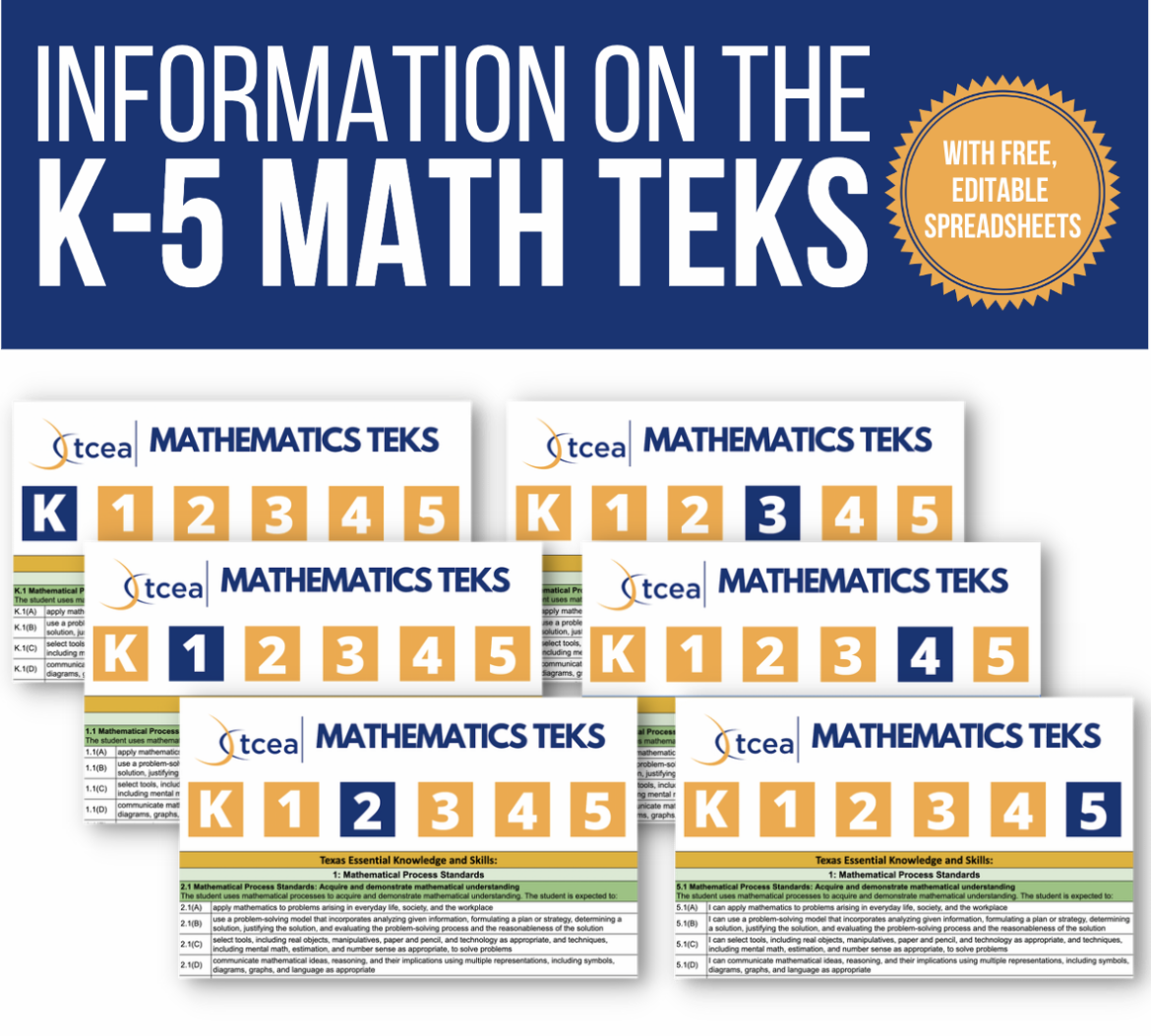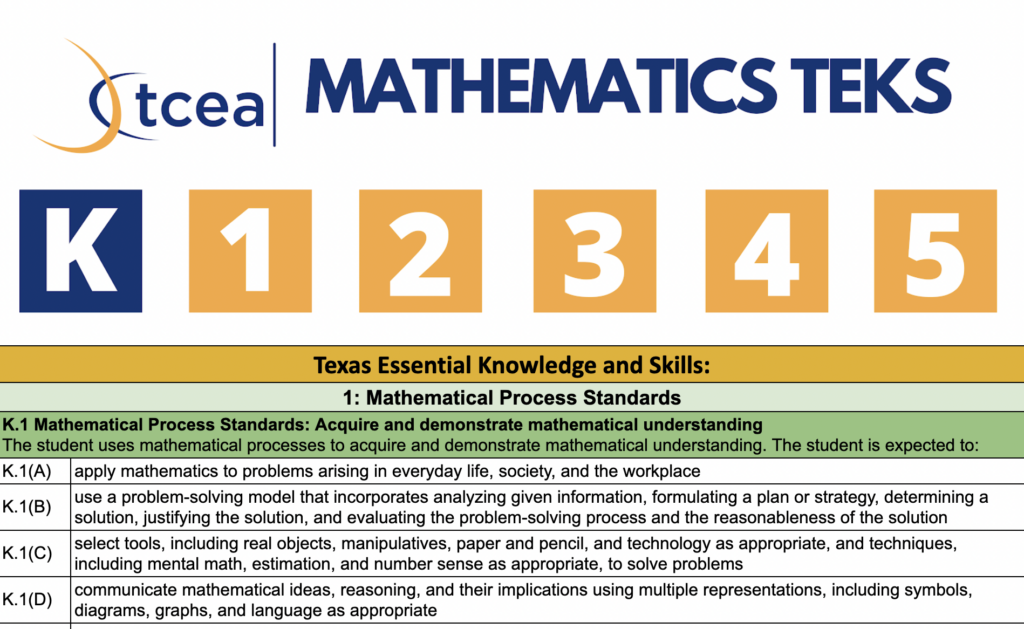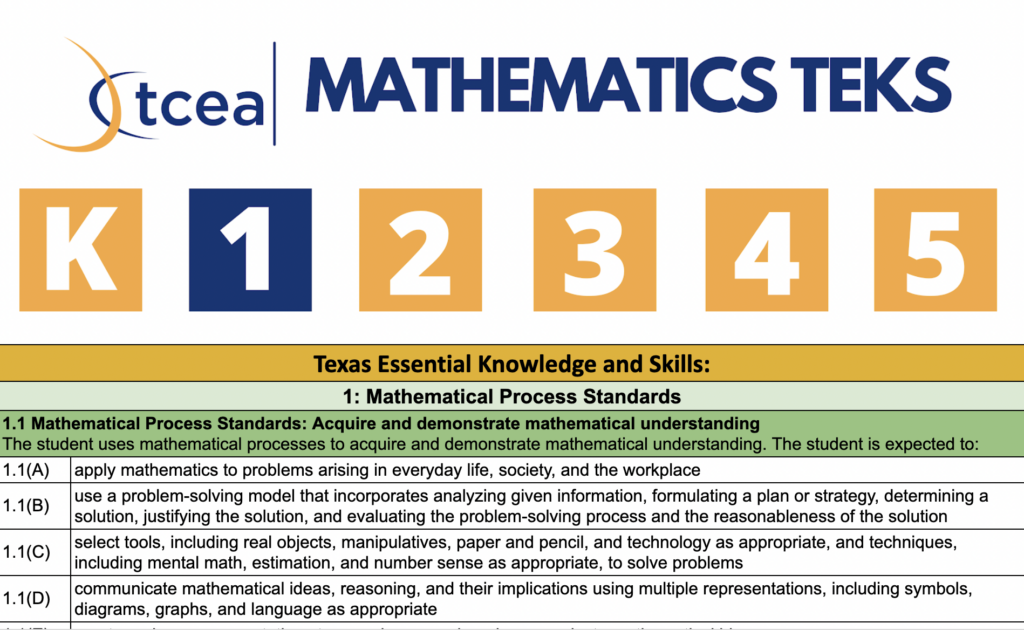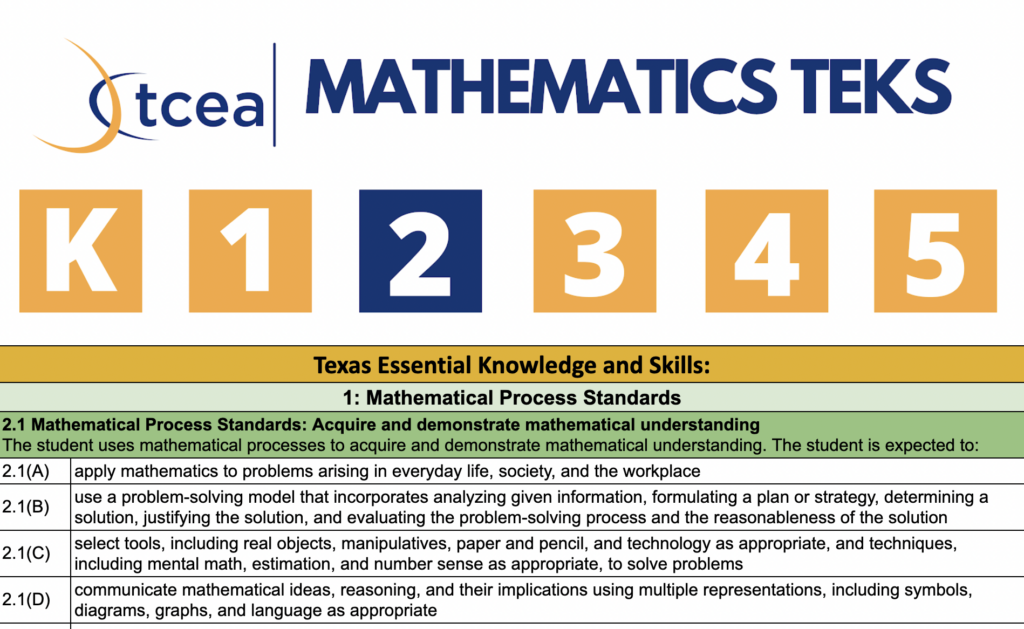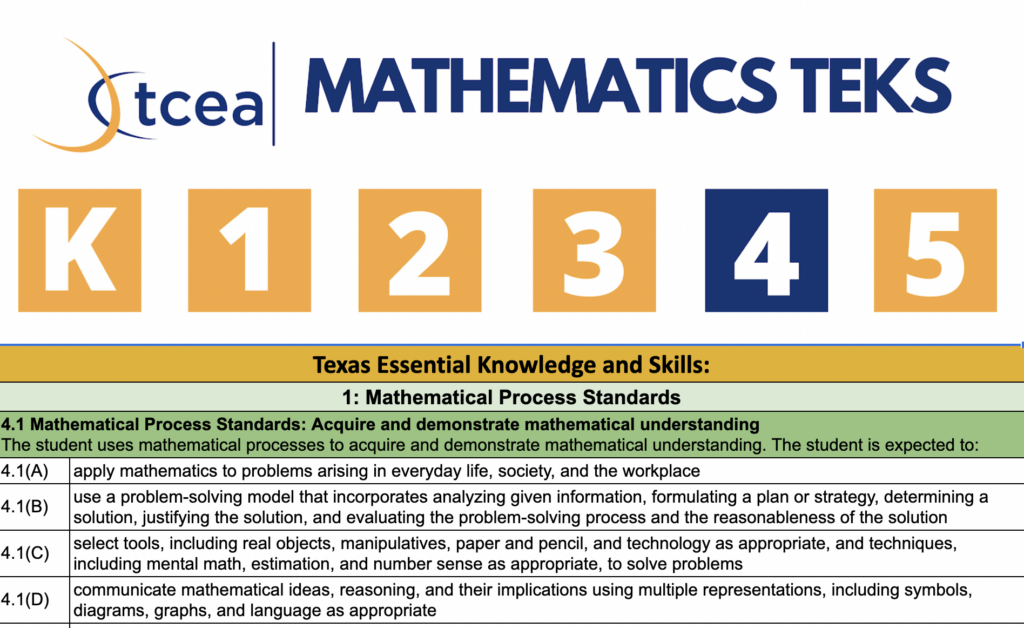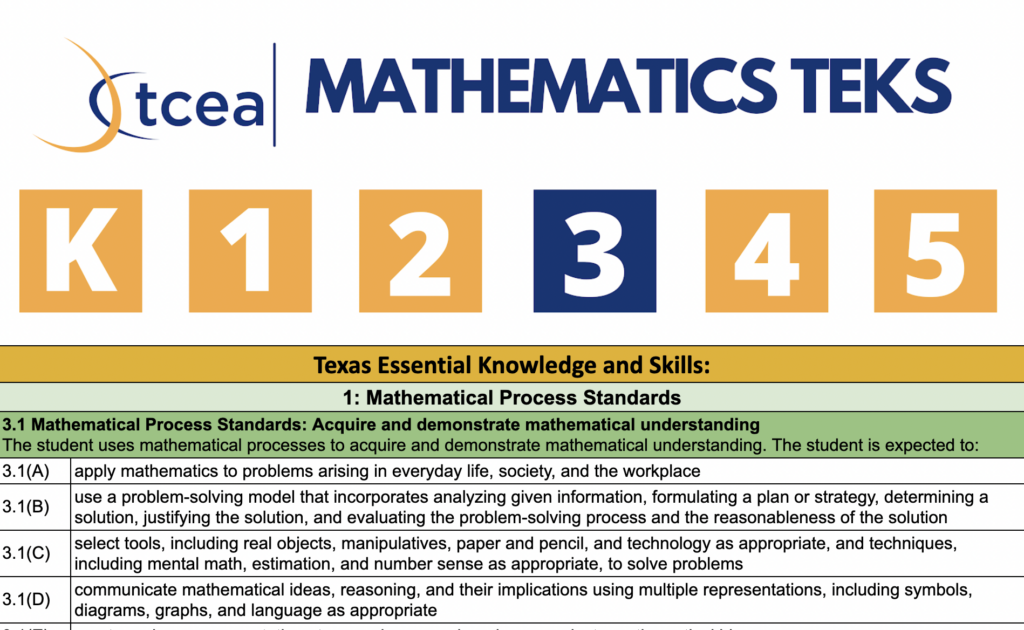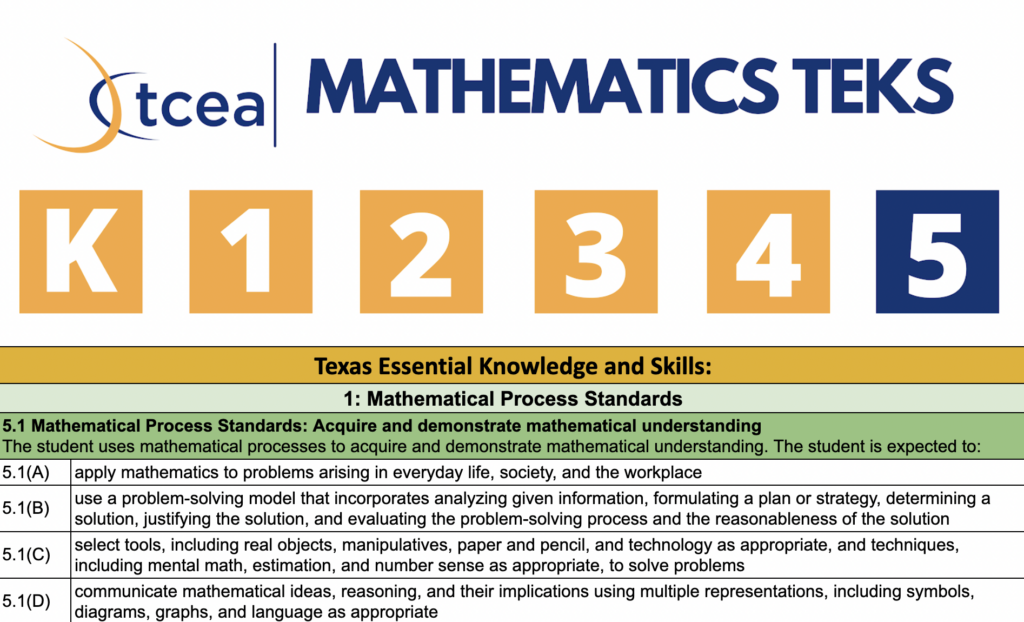I’m back with more on your favorite topic: the Texas Essential Knowledge and Skills (TEKS). This time, we’ll look at information on the K-5 Math TEKS, and you can download some freebies! You may have seen my post about The K-5 ELAR TEKS and Free, Editable Spreadsheets. You can find information in that article about how the TEKS are reviewed, revised, and streamlined. Today, we have the long-awaited and highly anticipated editable spreadsheets with the Mathematics TEKS and coordinating “I Can” statements for grades K-5!
What Are the TEKS?
In short, the TEKS are the curricular standards adopted by the Texas State Board of Education. These standards outline what students should know and be able to do in each content area for each grade level. State-mandated tests are aligned with these standards to measure student achievement and skills acquisition.
About the Mathematics TEKS
In 2012, the SBOE adopted revised K-12 Mathematics TEKS, which were implemented in the 2014-2015 school year. Here are the top seven things to know (from the Mathematics TEKS introduction):
1. It is clearly written that the purpose behind the Math TEKS is college and career readiness and preparation for 21st-century challenges.
2. Each grade level purposefully begins with mathematical process standards. since these connect knowledge and skills, allowing students to demonstrate their understanding through problem solving and application of skills to everyday life. These are the same for each grade level.
3. The introduction goes further to describe the problem-solving model in the mathematical process standards for how students can apply their mathematics skills by:
- Analyzing given information
- Formulating a plan or strategy
- Determining a solution
- Justifying the solution
- Evaluating the problem-solving process and the reasonableness of the solution
4. In the introductory explanation of the mathematical process standards are examples of tools, techniques, and methods of communication students may choose from for problem solving and communicating (explaining, displaying, or justifying) their ideas.
- Tools: real objects, manipulatives, algorithms, paper and pencil, and technology
- Techniques: mental math, estimation, number sense, generalization, and abstraction
- Communication: symbols, diagrams, graphs, computer programs, and language (written or oral)
5. There is an acknowledgment of the development of number sense as being necessary for developing fluency. That said, in order for students to develop procedural fluency, it is explicitly stated that students in grades K-5 should complete their work without calculators.
6. In addition to the mathematical process standards, each grade level has different “primary focal areas” within the strands of:
- Number and operations
- Algebraic reasoning
- Geometry and measurement
- Data analysis
- Personal financial literacy
7. Within the standards, “such as” is used to illustrate examples, whereas “including” alludes to content that must be mastered.
Helpful TEKS Documents
- TEA TEKS Documents
- K-12 Vertical Alignment Charts for Math TEKs
- lead4ward TEKS Resources
- TEKS Guide by TEA
Freebies from TCEA
Ok. That’s done! Now let’s get to the freebies. Click the links to make a copy of the editable TEKS spreadsheets for your grade level(s). Each spreadsheet has a tab with the TEKS and a tab with correlating “I can” statements. Is there something else TEKS-related that would be helpful? If so, let me know in the comments or send me an email (ehopkins@tcea.org). I’d love to hear from you!
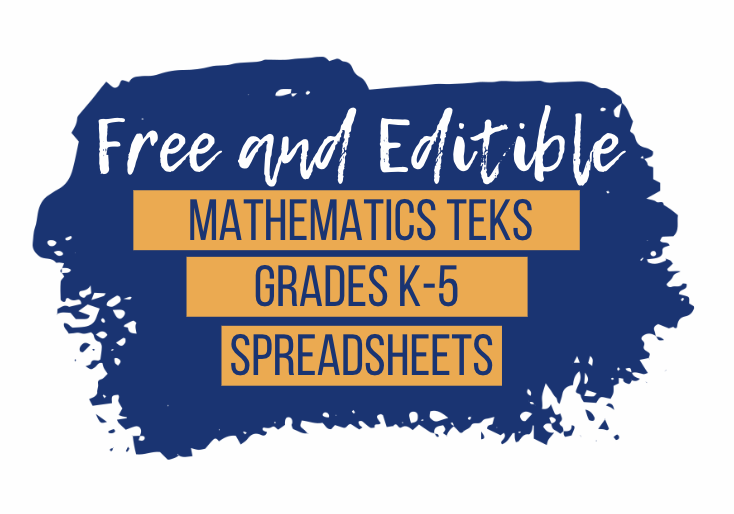
Additional STAAR and TEKS Articles You May Find Useful
Reading Language Arts STAAR Test Resources
STAAR Prep: A K-5 Argumentative/Opinion Writing Strategy
STAAR Prep: Spelling Strategies, Resources, and Downloadable Posters
The K-5 ELAR TEKS and Free, Editable Spreadsheets
A Practical Strategy for Teaching Editing Skills
A Powerful and Easy Strategy for Teaching Text Evidence

